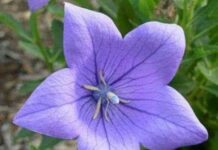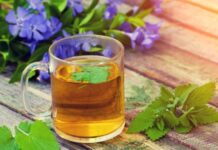by Dan Driedger
The garden is a place of creativity and backyard adventure. It is for this reason that many choose not to seed grass from corner to corner. The introduction of variety of colour, texture, leaf formation, seasonal variation and hardscaping all have a part in the creative backyard.
There is another feature to consider and that is grafting.
Grafting can add variety, interest and art forms. I once read of a university professor who had 60 grafts on one tree in order to achieve interesting blooming. Grafting doesn’t just happen in spring, but can happen at different times of the year depending upon what project and plant varieties are involved.
This technique has been used extensively in the production of fruit trees and ornamentals. For instance, a rose produced and sold as a standard with a two-foot main stem and attractive foliage and rose blossoms on top is the product of grafting. Many plants are grafted onto hardier root stock to accommodate our Canadian climate.
Most grafting is done with trees and perennials simply because it is so labour intensive. However, the grafting of annuals also has its rewards. Commercial growers are now grafting cucumbers onto hardier root stock from squash and pumpkins for increased production. Eggplant, tomatoes and peppers can all be grafted onto a potato stock since they are all plants within the nightshade family. In this manner, one plant can produce potatoes below ground and tomatoes, peppers or eggplant above ground. This could be an obvious advantage if your yard is small and you are trying to use your space with intensity.
Recently, I tried grafting petunias (another nightshade) onto a potato stock and found a measure of success. Here is the photo of my potunia or should I say petato. It has just begun to bloom. Knowing that these varieties can be successfully grafted raises new possibilities. For instance, multiple colours or sizes of blooms of petunias could be grafted onto one potato stock. It could mean that as you clean up your flower beds in fall, you have a harvest of potatoes. Or, better use of space for as in a front yard which is normally reserved for flowers and ornamentals. Or, just possibly, a hardy perennial rootstock might help keep petunias alive over the winter (they are a tender perennial grown as an annual).
My next graft will be to use a petunia scion (grafted portion) onto a goji berry rootstock to see if this can be accomplished.
Potatoes are an interesting root stock as they are amazingly resilient. For instance, a potato plant can be grown from just a potato sprout that is a centimetre long. If you use an actual potato to start growth, there is a massive food reserve for the developing plant. However, the challenging part of using potatoes for root stock is that they are extremely light sensitive. If light is withdrawn for too long, the entire plant will shut down. This has significance when grafting, as the plant needs to be placed in a low light environment, in order to slow metabolism during the healing process following grafting.
One of the challenges in grafting this year was that we had periodic heat spikes. In the first week after grafting, a heat spike can increase evaporation from the scion to the extent that it wilts. The effect of evaporation can be countered by placing the plant into a black garbage bag in a cooler location. This reduces light and maintains a high moisture level in the air around the plant.
If you are interested in grafting, here are some pointers: Check out a website like pinterest to learn the appropriate grafting technique, and make certain that plants are compatible — meaning they belong to the same family. Start with clean and sharp instruments.
Make certain that it is the right time in the life of the plant to accomplish your desired end — such as graft a bud, not a full blossom.
Be sure to place your grafted annuals in a low light setting following procedure.









